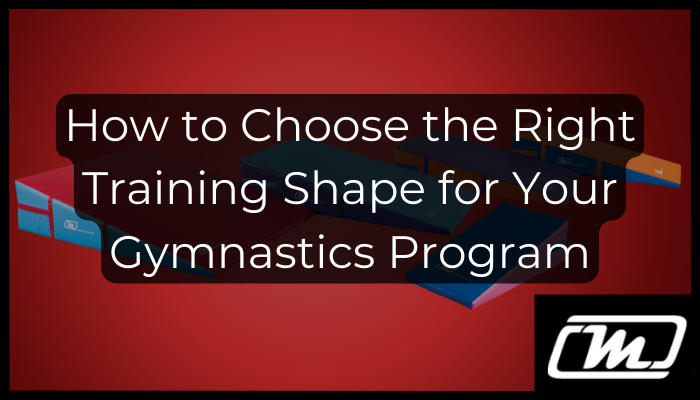Every coach knows that the right drills build champions, and the right training shapes make those drills possible. Foam wedges, octagons, trapezoids, and vault trainers are not just equipment. They are tools that shape movement patterns, protect athletes from injury, and accelerate skill mastery.
Choosing the wrong shape can slow progress or lead to bad habits. Choosing the right one means athletes learn faster, safer, and with better technique. Here is how to select the best gymnastics training shapes for your program, based on skill goals, athlete level, and coaching needs.
1. Incline Mats (Wedges)
Best for: rolls, handspring shaping, and vault drills.
Incline mats use gravity to your advantage, helping athletes maintain correct body alignment. They reduce impact on wrists and shoulders, making them ideal for beginner skills and shaping advanced movements.
Coaching Tip: Use for forward and backward rolls in preschool classes, then progress to front handspring drills by having athletes run and hurdle onto the wedge. For vault training, place the wedge uphill to develop power and blocking technique.
2. Octagon Mats
Best for: walkovers, handsprings, and tumbling progressions.
Octagon mats create a natural rolling motion that helps athletes rotate through skills without abrupt stops. They are especially effective for bridging the gap between basic rolls and full handsprings.
Coaching Tip: Start beginners with assisted walkovers over the octagon to build shoulder flexibility and confidence. For advanced athletes, use it to fine-tune back handspring body positions by spotting at the takeoff and landing phases.
3. Handspring Trainers
Best for: back handspring repetition without high impact.
These trainers place the athlete’s body in the correct arc for a back handspring, allowing for multiple high-quality reps in a short time. They help athletes lock in muscle memory while reducing stress on the lower back and shoulders.
Coaching Tip: Begin with spotted back handsprings over the trainer for beginners. For team athletes, set up a circuit where gymnasts perform handsprings over the trainer, then immediately take it to the floor for skill transfer.
Shop Mancino Handspring Trainers
4. Trapezoid Trainers
Best for: vault approaches, block timing, and plyometric conditioning.
Trapezoid trainers are versatile because their height and shape can be adjusted by removing or adding sections. This makes them useful for both introductory vault drills and strength-building jumps.
Coaching Tip: For beginner vaulters, use a taller trapezoid to simulate the vault table while focusing on correct hand placement. For older athletes, lower it and incorporate hurdle-to-block drills to increase explosive power.
Shop Mancino Trapezoid Trainers
5. Foam Vault Training Table
Best for: safe vault progressions from beginner to advanced.
This table mimics the shape of a competition vault but with a foam surface for safety. It allows beginners to learn proper body positions and hand placement while giving advanced athletes a safe way to train new entries and approaches.
Coaching Tip: Start with hands-on drills for pre-team athletes, focusing on strong run-ups and correct arm swing. For competitive gymnasts, practice Yurchenko entries or Tsukahara approaches without the risk of a hard table.
Shop Mancino Foam Vault Training Table
The Bottom Line
When selecting training shapes, start by identifying the skills you want to develop, then choose the shape that best supports that goal. Consider your athletes’ current ability levels, and look for equipment that can grow with them as they progress.
High-quality shapes like Mancino’s wedges, octagons, handspring trainers, trapezoid trainers, and foam vault training tables give you the flexibility to create safer, more effective training environments that produce real results.
Upgrade your gym’s training toolkit today.
Shop Mancino Skill Shapes and give your athletes the safest path to their next big skill.


